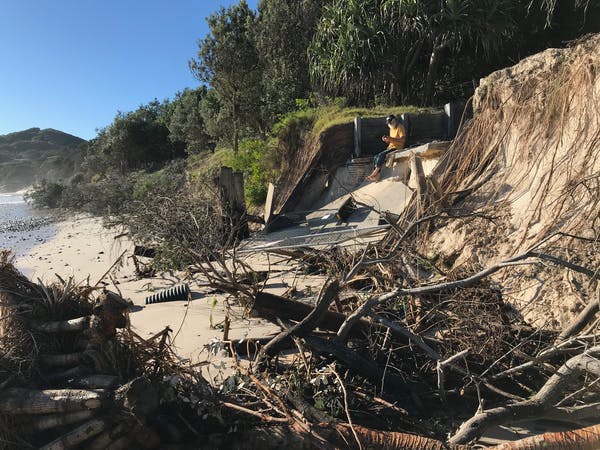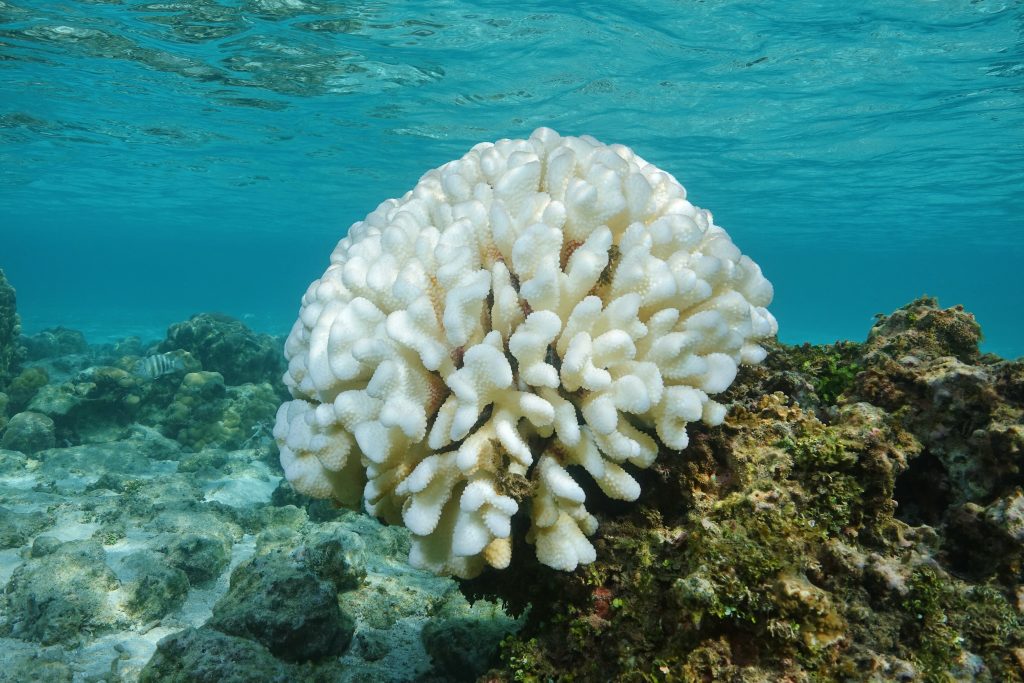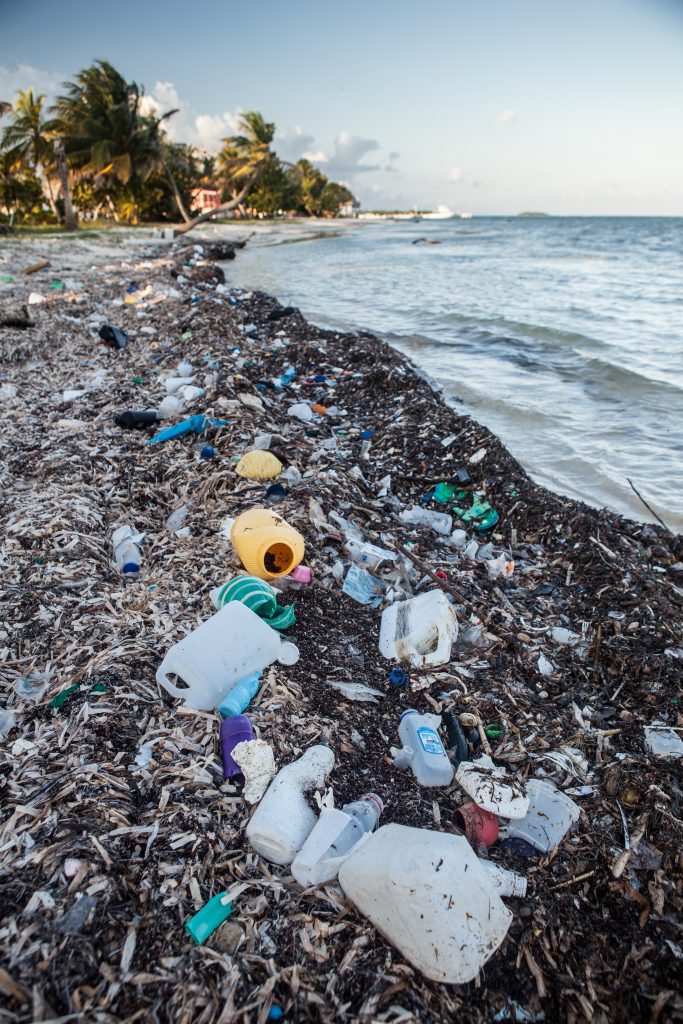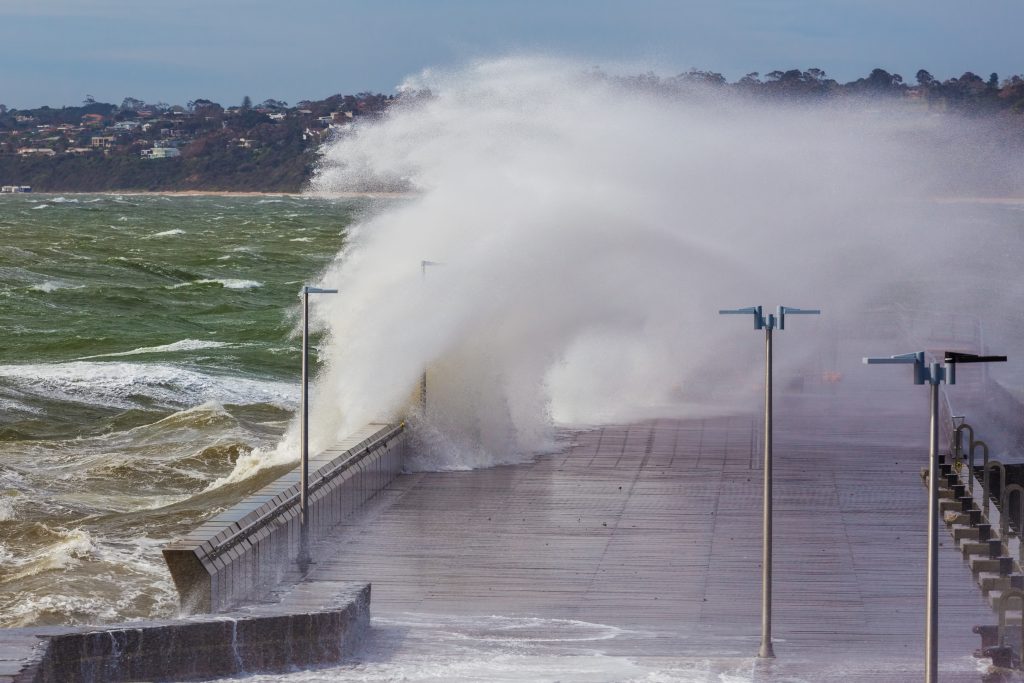How the blue economy
benefits Australia
What is the blue economy?
The blue economy focuses on achieving a healthy marine environment, a strong economy and a vibrant society by sustainably managing one of Australia’s greatest resources: our oceans and coasts.
In this economy, the long-term health, resilience and prosperity of oceans, coasts, economy and society are inextricably intertwined. Marine science is a key economy driver.
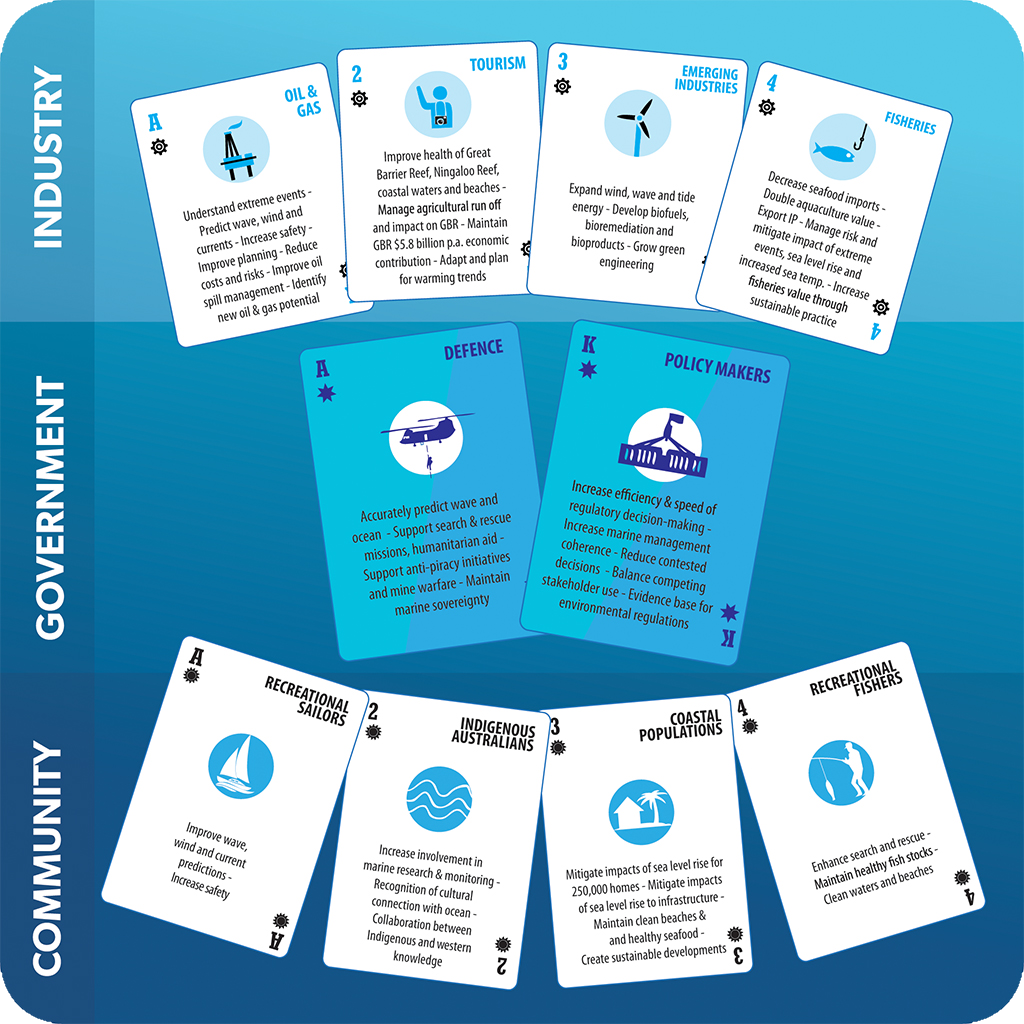
The value of Australia’s marine estate and the blue economy
By 2025, Australia’s blue economy is projected to be worth $100 billion per annum. It has already contributed $69.2 billion to the national economy in 2018. This represented 3.7 per cent of national gross domestic product (GDP).
Globally, ocean economic activity is estimated to be worth US$3–5 trillion.
Australian blue economy industries include marine tourism, energy and food production, and transport. It also includes emerging industries such as marine renewable energy, offshore aquaculture, autonomous technologies, new sensor development and machine-learning applications.
The blue economy includes marine industries, such as wave energy, oil and gas, aquaculture, shipping, fishing and tourism, as well as cultural and recreational use of Australia's oceans and coasts. (Credits: Waveswell, Shutterstock, Ludo Kuipers)
The ocean’s ecosystem services, such as climate regulation, carbon dioxide absorption and coastal protection, are estimated to be worth billions more. Meanwhile, the environmental and cultural value of our oceans and coasts is priceless.
Australia is responsible for a marine estate that covers an area greater than its land mass. This is home to some of the world’s most biodiverse and iconic ecosystems.
For a coastal-hugging nation, our oceans and coasts are an integral part of our cultural psyche, play and wellbeing. And they are the cultural lifeblood of Traditional Owners, who have sustainably used and protected their Sea Country over millennia.
To learn more, listen to our recent spotlight on the value of marine industries and science to the Australian economy.
Measuring the economic benefit of Australia's marine estate
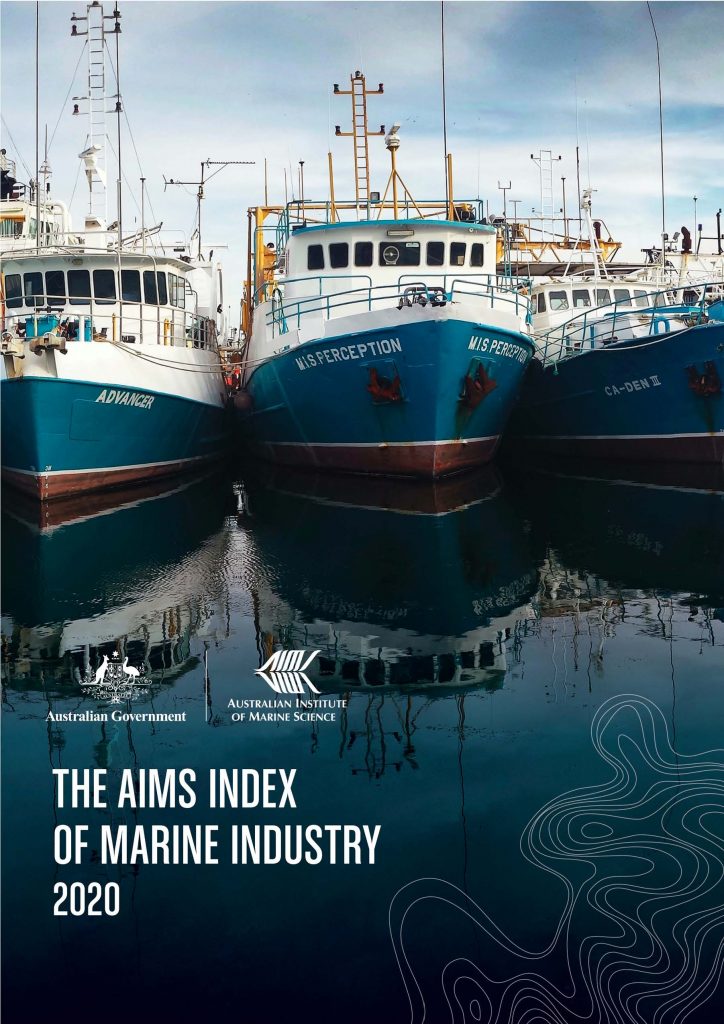
The AIMS Index of Marine Industry assesses the output of Australia’s blue economy and its contribution to the nation’s economic bottom line. It uses accessible economic data to provide an estimate of the income earned by Australian marine-based industries and their value-added contribution.
The NMSC’s reports focus primarily on the blue economy's value-added economic contribution. This framework focuses on the flow value of Australian marine industries to the national economy and employment.
This approach is consistent with the National Accounting Framework used by the Australian Bureau of Statistics to measure GDP. It also enables comparisons between the value of marine industries and the value of other industries to the economy.
These reports are available here.
Threats to the blue economy
The National Marine Science Plan 2015–2025 identified seven grand challenges facing our marine estate and the blue economy.
But since the Plan’s implementation in 2015, the threats to ocean and coastal health have increased.
These threats to the blue economy’s foundation have increased as our coastal population and reliance on marine resources have risen.
They include accelerating climate change, pollution, demographic change, loss of biodiversity and habitat, aging marine and coastal infrastructure, and biosecurity threats.
Meanwhile, the COVID-19 pandemic has driven a broader need for economic and social recovery, resilience-building and preparedness against future shocks.
Unchecked economic ocean activity also poses a real threat to the ecological health of the world’s oceans, which are increasingly under stress.
Challenges include bushfires, coastal erosion, marine pollution, storm surges and coral bleaching (Credits: Martin Von Stoll, Byron Shire Council, Shutterstock)
Delivering the blue economy: we're not alone
Australia is not alone in its efforts to sustainably manage the long-term health of our oceans and coast. Or to deliver the economic, environmental, social and cultural benefits of a blue economy.
The United Nations Decade of Ocean Science for Sustainable Development (2021–2030) is mobilising the global scientific community, policy-makers, industry and civil society. This UN Ocean Decade is focusing on joint research and technological innovation to halt the decline in ocean health and support sustainable development. This initiative supports the broader UN Sustainable Development Goals.
The Australian Government has also joined forces with 13 other countries on a High-Level Panel for a Sustainable Ocean Economy. Australia and these other governments have now committed to having an Ocean Action Plan to sustainably manage 100 per cent of their national estates by 2025.
NMSC Chair and Deputy
Chair: Dr Patrick Hone, Managing Director, Fisheries Research and Development Corporation
Deputy Chair: Dr Lyndon Llewellyn, Research Manager of the Australian Institute of Marine Science
NMSC secretariat
annette.lyons@frdc.com.au
Stay in the loop
Documents and images
All documents on this site remain the property of the relevant authors. These documents should be cited if used in research or for other purposes.
All images on this website have been contributed by NMSC Members, or are fully licensed through Adobe Stock and Shutterstock.
